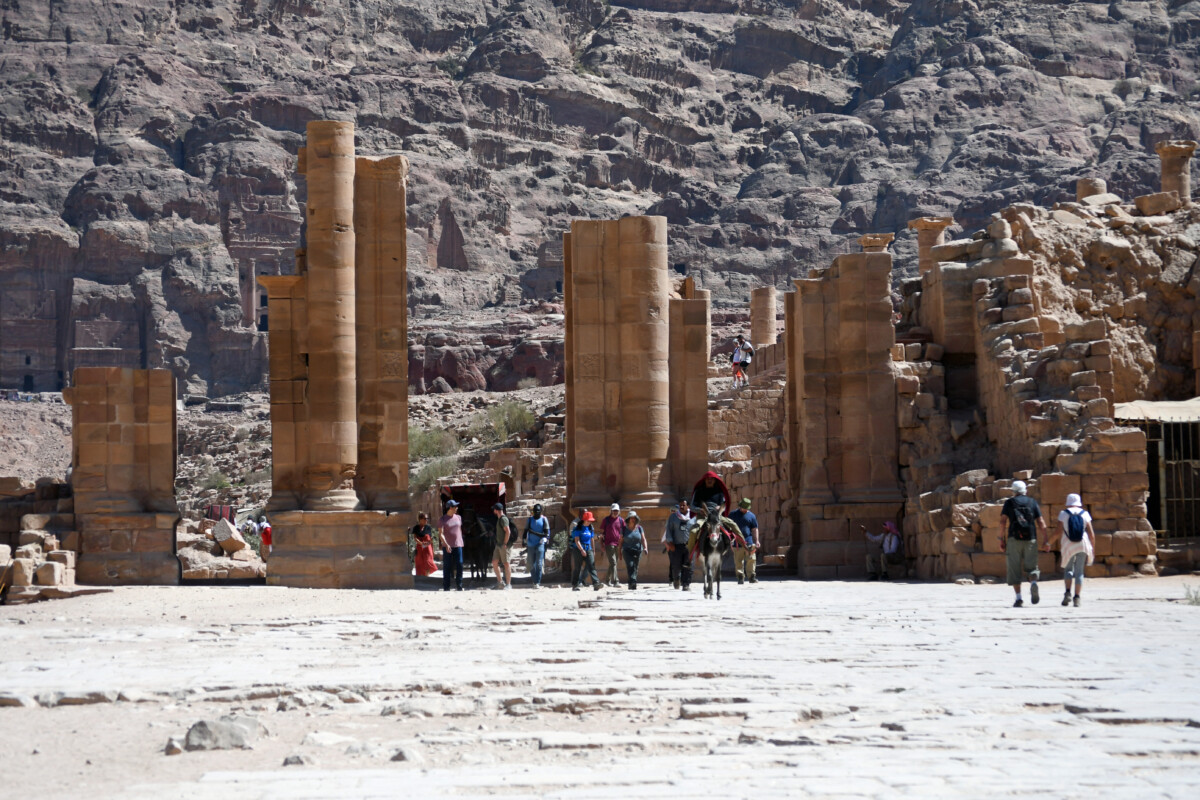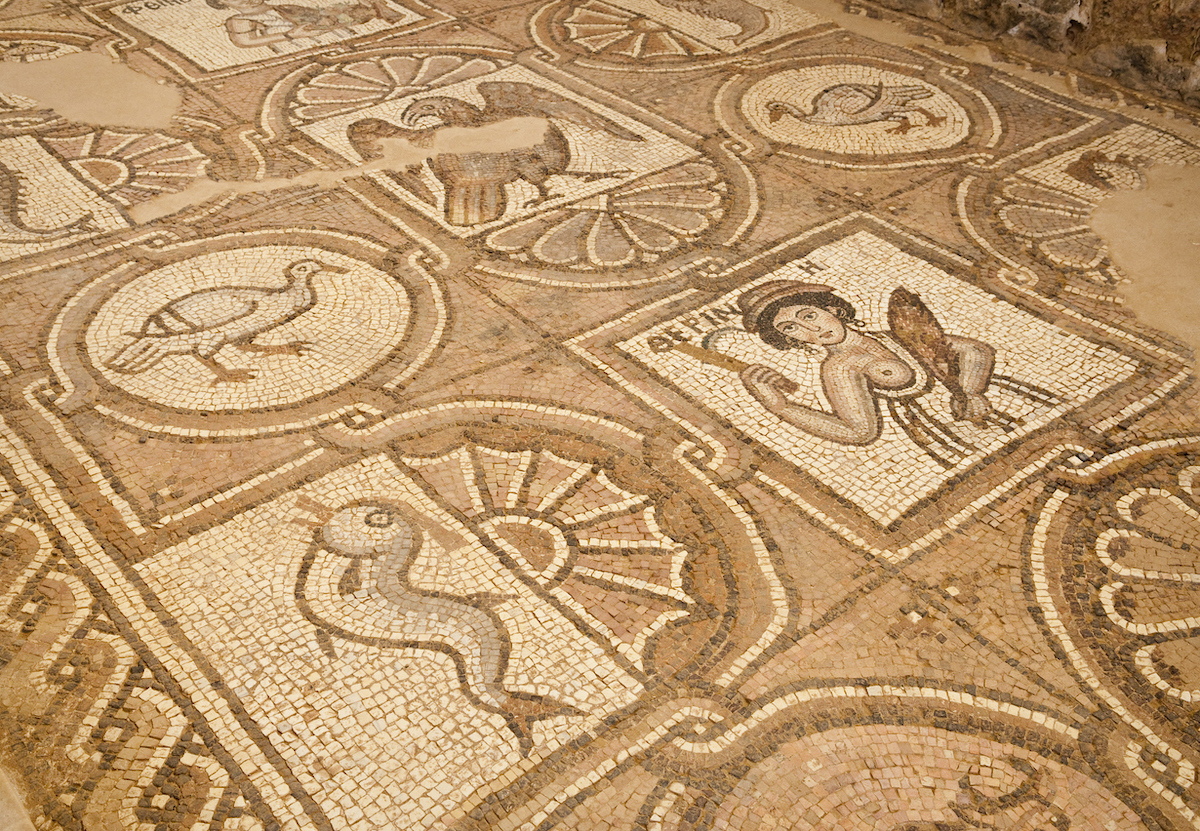10 Wow Moments When You Visit Petra
Petra is one of the New Seven Wonders of the World. Find out what makes this Jordanian World Heritage Site so amazing.
Set among the red sandstone canyons and cliffs of southern Jordan, the ancient city of Petra once served as the capital of the Nabataean Empire. Today, the 2,640-acre archaeological park is one of the New Seven Wonders of the World and a UNESCO World Heritage Site. I’ve wanted to visit since I first recognized it from the movie “Indiana Jones and the Last Crusade,” and it didn’t disappoint. Here are 10 wow moments you won’t want to miss when you visit Petra.
The Petra Museum opened in 2019, and it is the first building you encounter when you arrive at Petra. Plan to spend about an hour here before heading to the park’s entrance. This strategy accomplishes two things. First, you’ll get a good overview of the city and the Nabatean people who inhabited it. Second, it allows the early morning surge to filter through The Siq and past the Treasury.

The Petra Museum and “I Love Petra” sign are among the first things you see at the archaeological park. Photo by Teresa Bitler
Inside the free museum, the “wow” comes from the wealth of knowledge provided by touchscreen displays and informational placards on the wall. The museum also displays roughly 280 artifacts found in the archaeological park.
The Siq
After the museum, you’ll pass a plaza of gift shops—many paying tribute to Indiana Jones—and go through a turnstile to enter the park. From here it’s approximately one mile to the Treasury. The walk begins on a dusty trail that leads to the city gate. Although the gate no longer exists, two Nabatean reenactors stand guard at the canyon leading to the city.
The Siq begins here. Created by a natural split in the mountain, it resembles a slot canyon with towering walls. In several sections, stone slabs replace the trail’s pavement. These stones are the original road leading to the city.

The Siq ends with a jaw-dropping view of the Treasury. Photo by Teresa Bitler
Like most visitors, I felt awe the entire walk through the Siq. But the last stretch took my breath away as the Treasury became visible at the canyon’s end. Plan to spend several minutes here taking photographs. I did.
The Treasury
Carved into rose-colored sandstone, the Treasury is more than 130 feet high and features Corinthian capitals, frieze, and figures. Some archaeologists believe it was a temple, while others think it was where the government stored records. My guide told me it was a tomb. But to me, it will always be the site of the climactic end of “Indiana Jones and the Last Crusade.”

The Treasury appears in “Indiana Jones and the Last Crusade.” Photo by Teresa Bitler
Vendors sell trinkets (most made in China) and camel rides in the morning. Some offer to guide you to an overlook for an elevated view of The Treasury. It can be chaotic and overwhelming. If you want a good photo, come back in the afternoon.
Royal Tombs
From the Treasury, a visit continues with The Street of Façades, a row of Nabataean tombs carved in the cliff walls. Vendors peddle head scarves, jewelry, black velvet paintings, Arabic eyeliner, magnets, and more as you go. Moving along there is a Roman theater—the only theater in the world carved into stone—and it catches the eye. But the “wow” moment comes when you first glimpse the Royal Tombs.
Carved into the cliffs to the right of the Street of Façades, these four façades overlook the main route, the Petra. Don’t miss the opportunity to take the Al-Khubtha Trail to the base of the tombs, where you can walk a short way inside some of them.
The Colonnaded Street
I’m fascinated by the Colonnaded Street for two reasons. First, the remains of several columns line one side of the street. Archaeologists believe this would have been one of the principal shopping streets in the community, and commerce continues to thrive here as even more vendors sell their wares and offer donkey rides to the Monastery or back to the entrance of the Siq.

The Colonnaded Street highlights Rome’s influence on Petra. Photo by Teresa Bitler
Second, the street here is original, and if you look closely, you can see where chariot tracks have worn into the stone blocks. Be sure to turn around while standing on the Colonnaded Street to get a photo of the Royal Tombs from this angle.
The Great Temple
One of the most significant ruins in Petra, the Great Temple, dates back to about 100 BC. It covers nearly 25,000 square feet and overlooks the Colonnaded Street. I hate to admit it, but I looked at the staircase and told my guide I didn’t need to go up. Luckily, he ignored me, and I had no choice but to follow.

The Great Temple is one of the most significant archaeological finds in the park. Photo by Teresa Bitler
You can’t appreciate how massive this structure once was from ground level. I spent time admiring the structure’s columns and the elevated views of the Colonnaded Street and Royal Tombs. Watch for fragments of original frescos on some of the walls.
The Church
Across the Colonnaded Street from the Great Temple, the Church features elaborate mosaics of animals and the personifications of the four seasons, ocean, earth, and wisdom. Archaeologists believe the church dates back to around the 5th century A.D. and was destroyed the following century by fire or an earthquake.

A well-preserved floor mosaic in a Byzantine church in Petra, Jordan. Photo by Joel Carillet via iStock by Getty Images
While visiting the church requires walking an inclined trail, it’s worth seeing the mosaics, especially if you haven’t had the chance to visit the mosaiced churches of Madaba.
The Monastery
Also known as Ad Deir, this monumental ruin is one of the most impressive in the archaeological park but getting here involves hiking a steep 1.6-mile trail that begins at the end of the park’s 5-mile main trail. Expect the hike from the main trail up to the Monastery to take at least 2.5 hours. And to push you to your physical limits.
If this seems too much, you can ride a donkey to the Monastery and back. But the steep incline can make the ride up and down harrowing. Depending on the deal you strike with the donkey’s owner, a ride will cost about $15 JD (or $20 US) each way.

The Ad Deir Monastery ruins are carved in the rocky wall at Petra, Jordan. Photo by Lubo Ivanko via iStock by Getty Images
Should you go? That depends on how you’re feeling, the temperature, and the time of day. If you’re already tired by the time you near the end of the main trail, and it’s late in the day, you may want to skip it. But if you decide to go, you’ll be rewarded with a façade that is taller and wider than the Treasury and contains an altar inside.
Petra by Night
Offered every Monday, Wednesday, and Thursday at 8:30 pm, Petra by Night is a magical experience you’ll want to plan your visit around. The evening begins at 8:30 pm, but to be honest, you don’t need to get there early. I did, hoping to get a photo of the Treasury lit by over 1,500 candles without the crowds. Even though I was one of the first in line, by the time I walked through the Siq, there were already quite a few people. Friends who arrived later stood near the back and had a better view.

More than 1,500 candles light the Treasury during Petra by Night. Photo by Teresa Bitler
Sometime after 9 pm, the program begins. As projectors shine rotating colors on the Treasury, Bedouins play music and tell stories. Others serve complimentary sweet tea steaming in paper cups. The program lasts about 45 minutes, and most people leave as soon as it’s done, although Petra by Night runs until 10:30. Admission is $17 JD (about $24 US), and you must show a daytime ticket as well for admission.
Little Petra
Thought to have been a suburb of Petra, this site is less crowded than its neighbor, a 10-minute drive away, and it is free. But it’s also much smaller and doesn’t have the massive façades found in the World Heritage Site. You can step inside several caves, though, and there are fewer vendors. Where you should expect to spend an entire day at Petra, you can see Little Petra in under an hour.

A short drive from the archaeological park, Little Petra offers more ruins on a smaller scale. Photo by Teresa Bitler
I definitely wouldn’t recommend Little Petra over Petra. Go to Petra. But if you can’t get enough of Nabatean architecture, Little Petra is worth the detour.
Where to Stay During a Visit to Petra
You’ll want to overnight in Wadi Musa, the community where Petra is located. Why? First, you’ll be exhausted after spending the day exploring the park and won’t want to drive very far. Second, if you attend Petra by Night, it will be late when the program finishes.

The Movenpick Petra features Arabic-inspired decor. Photo by Teresa Bitler
I recommend staying at the Movenpick Resort Petra. It is a beautiful 5-star resort with Arabic-influenced décor and directly across the street from the park’s entrance. You cross the street and walk into the Movenpick lobby. The rooms are clean, the staff is friendly, and the buffet is very good.
Where to Eat When You Visit Petra
Even though the Movenpick Petra has a good buffet, book an evening at the Petra Kitchen, a short walk from the hotel. The chef will put you and dozen others to work chopping, slicing, and mixing ingredients for a traditional Jordanian meal consisting of soup, salads, appetizers, and the main course.

At Petra Kitchen, you help prepare traditional Jordanian dishes. Photo by Teresa Bitler
While Petra Kitchen is marketed as the opportunity to work alongside local women in a “home kitchen” atmosphere, it’s a cooking class light on instruction and overseen by sous chefs. Still, it’s a great introduction to preparing traditional foods.
Articles Related to 10 Wow Moments When You Visit Petra
Why You Should Visit Petra
The movie “Indiana Jones and the Last Crusade” may have inspired me—like it does so many others—to put Petra on my bucket list. But I learned on my visit that this archaeological site is so much more than its role in the popular movie. When you enter Petra Archaeological Park, it feels like you’re stepping into a 2,000-year-old time capsule.
Here, you’ll see not only the tombs and façades carved by the Nabateans but also Roman ruins and Byzantine churches’ remains. You’ll also come face-to-face with the descendants of Bedouins who lived here for centuries, some of whom still live here illegally after the park’s creation. The whole experience of visiting is a “wow” moment I’ll never forget. Let Wander be your guide when planning your trip to Petra, Jordan, or any other historic town.

